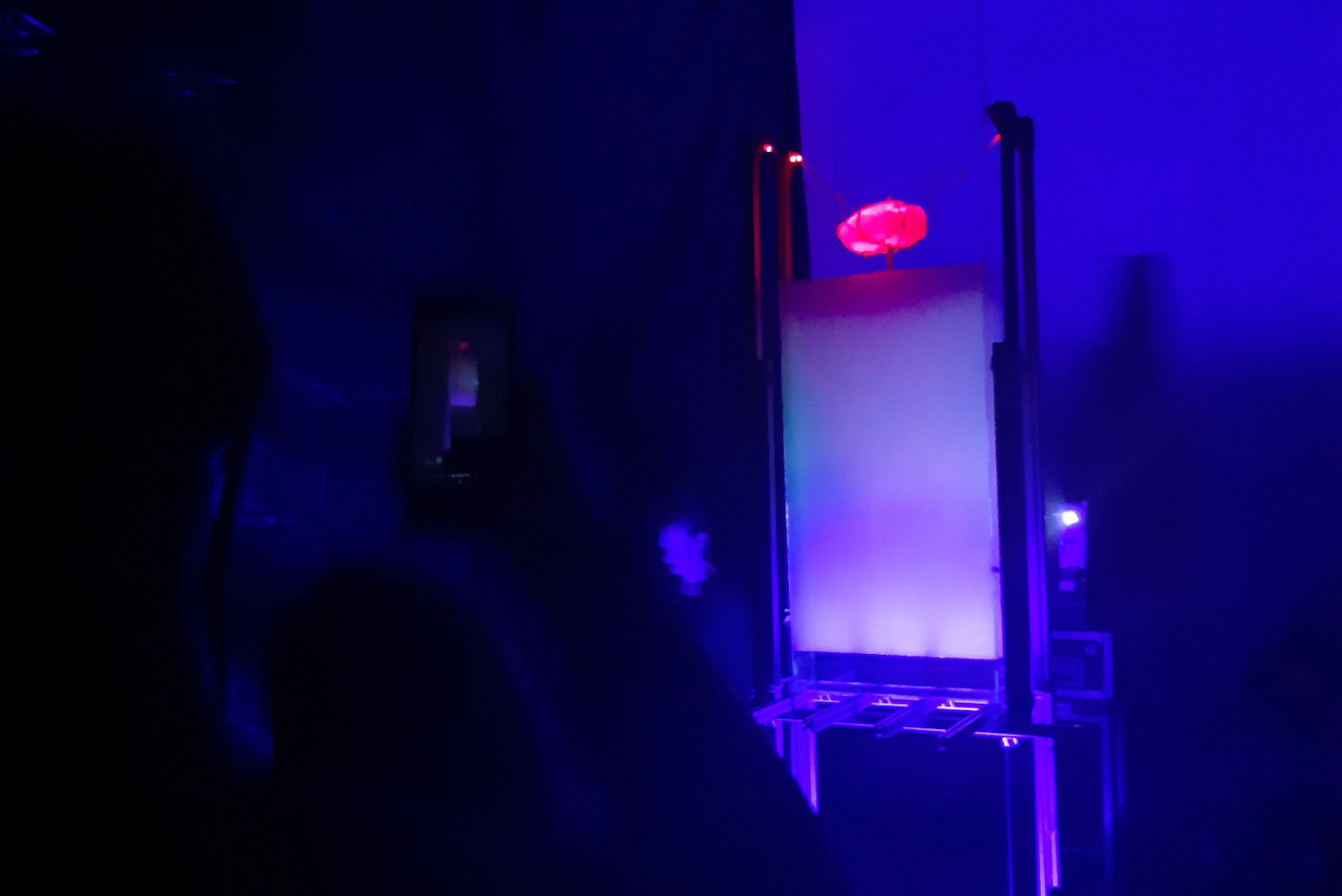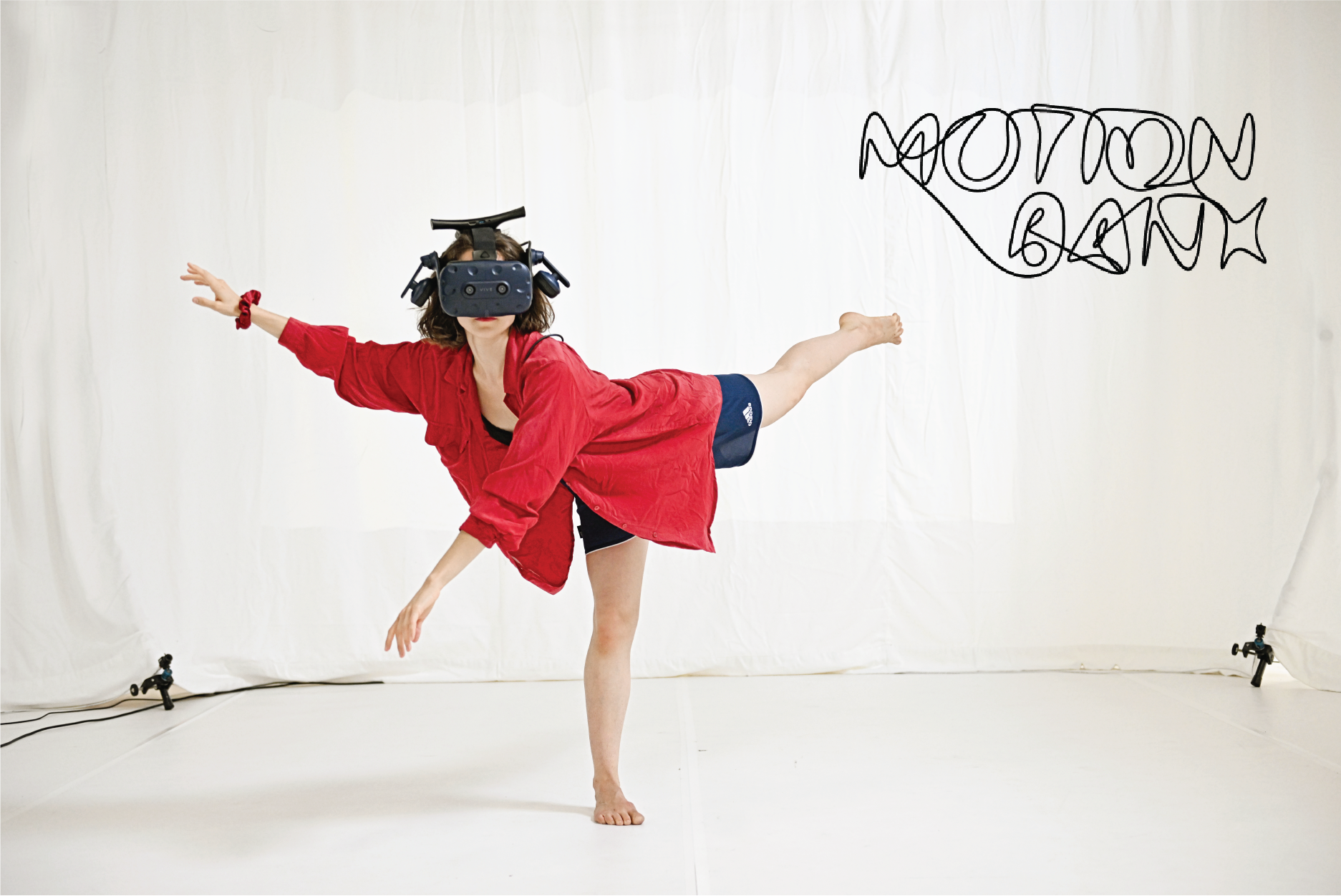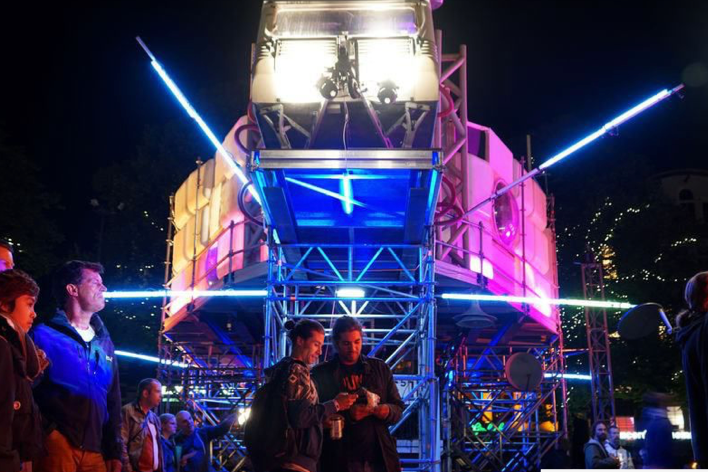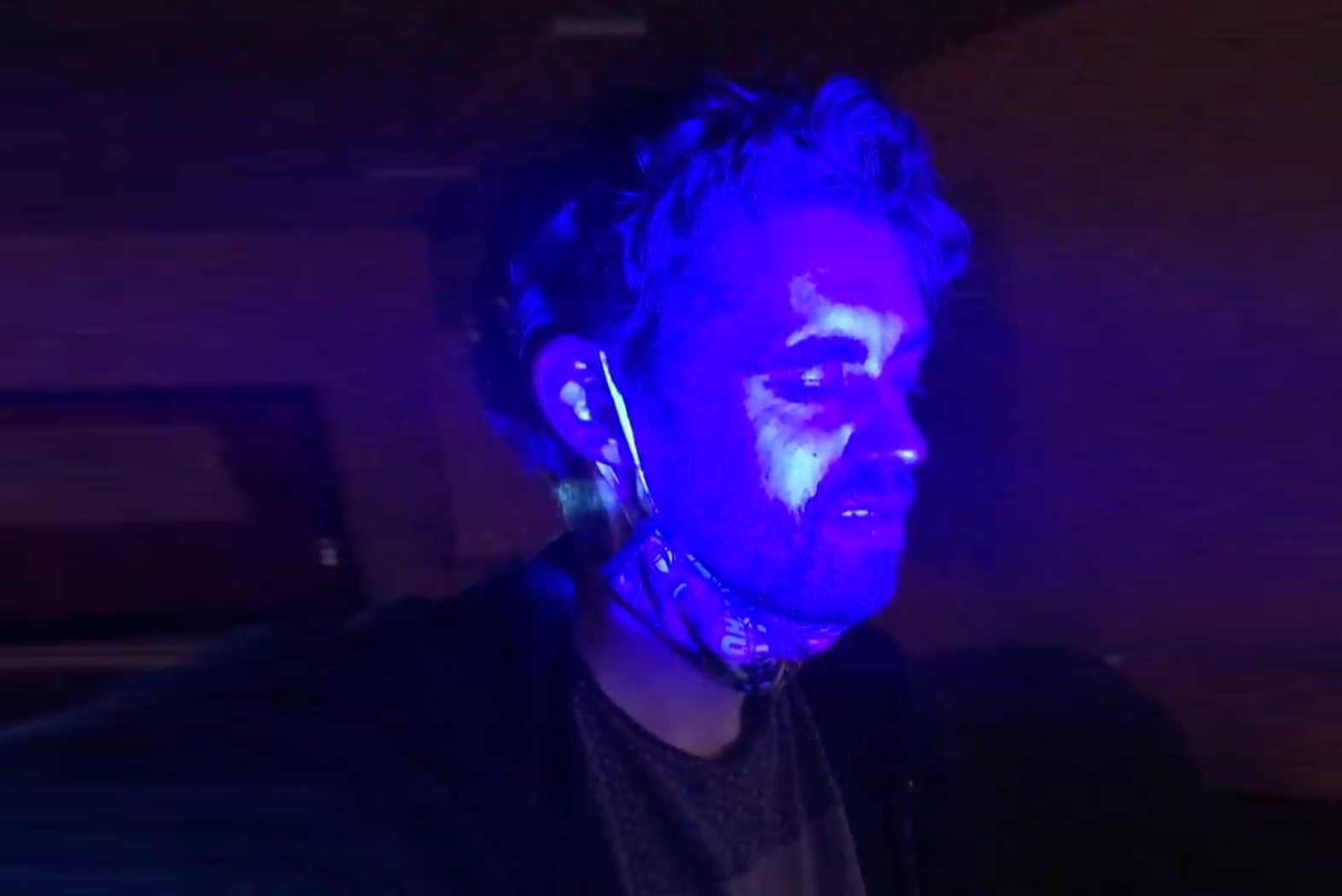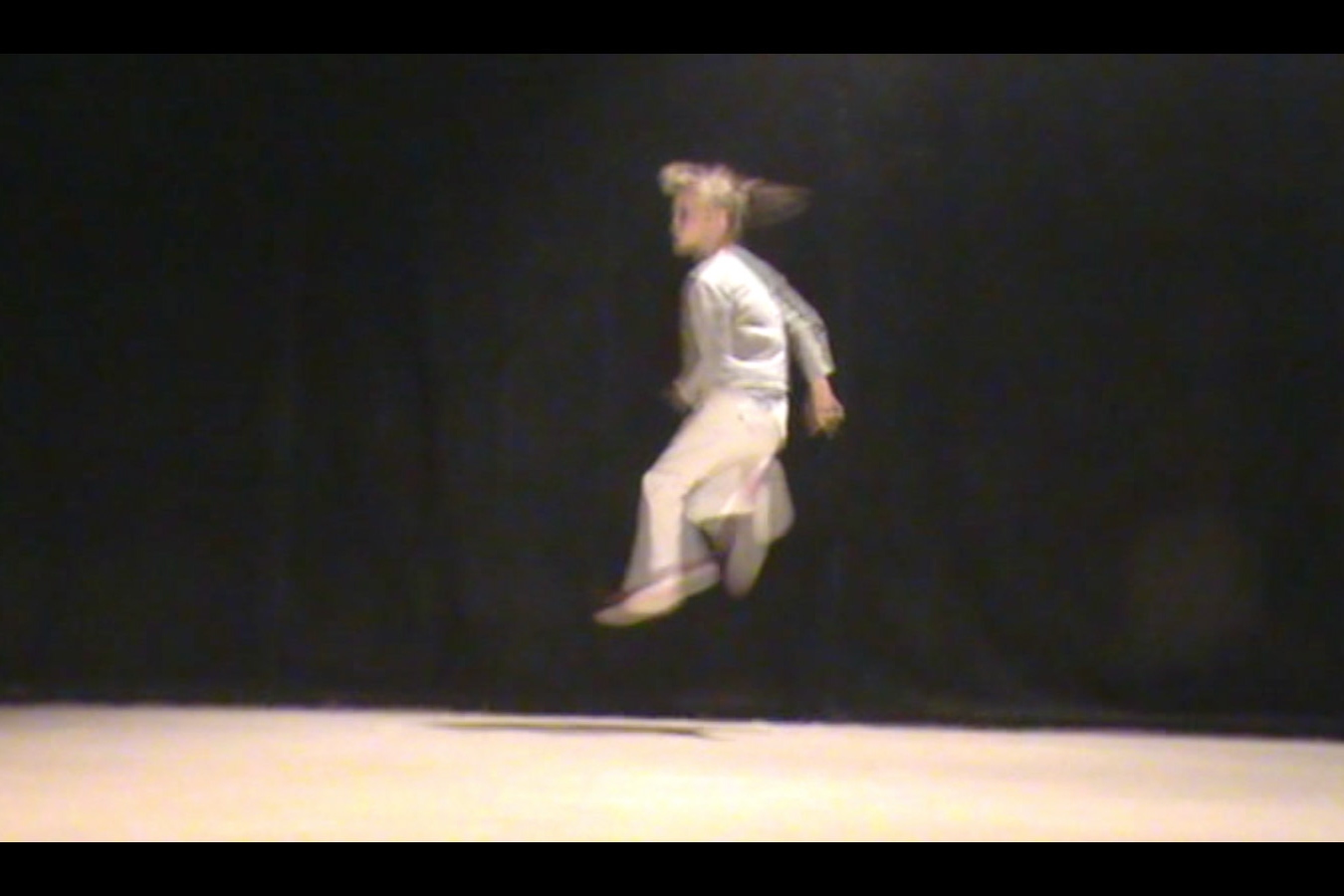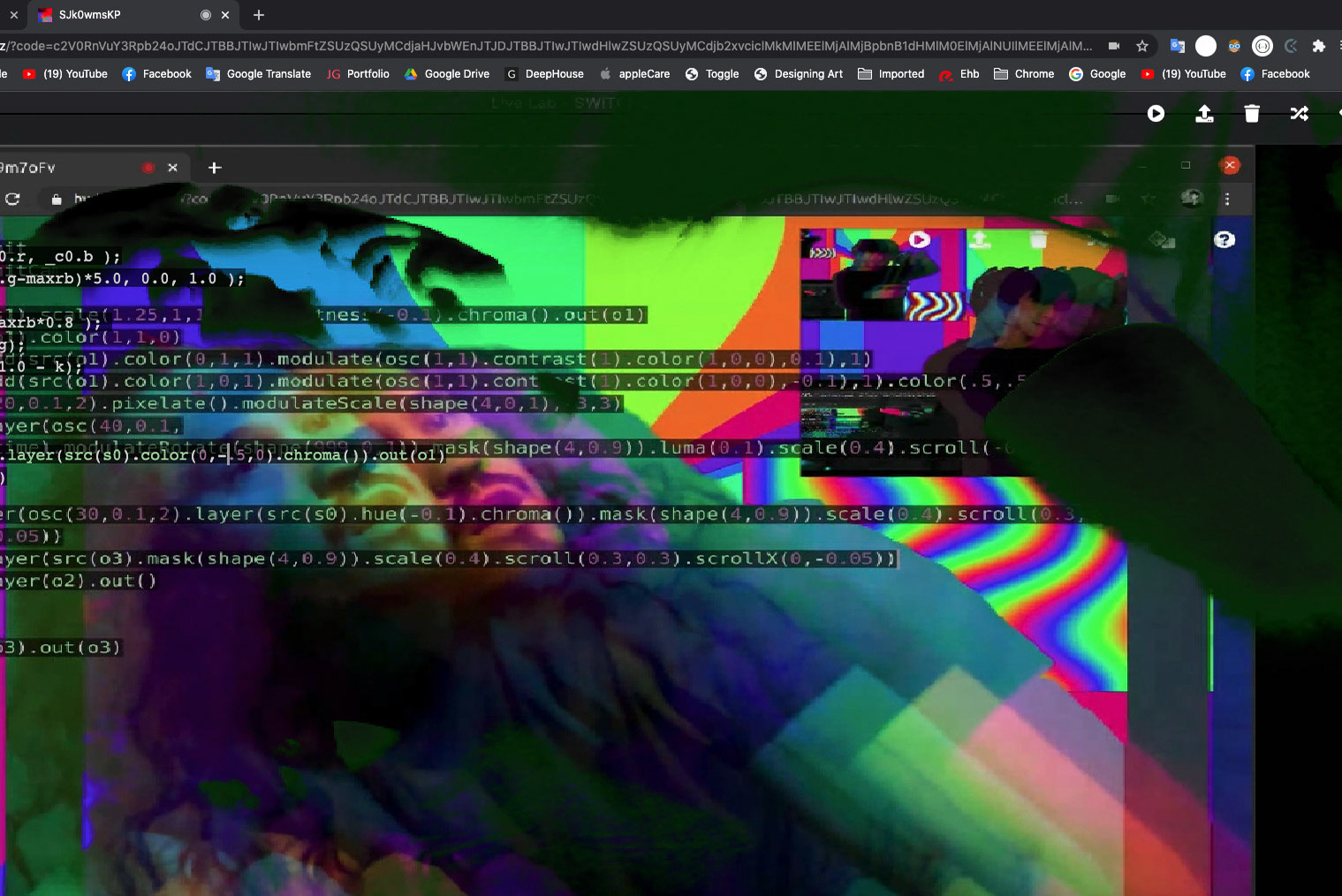biomodd [BRG13] (SEADS)
The Biomodd installation for the Saint John’s Hospital was created with more than 150 participants from Bruges and the SEADS network, in close collaboration with Musea Brugge. It was built out of construction materials that were recycled from the numerous art exhibitions in the city from the past 20 years. In this way, the installation bridges the rich historical past of Bruges with artistic visions about the future of our world.
A new multiplayer computer game was also created for this iteration of Biomodd. During the installation's standby mode, LED grow lights illimunate the internal ecosystem. Once visitors interact with the multiplayer game, the grow lights switch off and interactive lighting turns on. This lighting is connected to the game and reflects the activities of the players, while also impacting the plants. Sensors pick up signals from the plants and these data are then fed back into the game - like in an endless feedback loop. The same data generate a dynamic digital soundscape. In addition to the diverse plant species, bacteria and microalgae are also featured in the installation. Biomodd is a community art project that creates new relationships between nature and technology across different cultures around the world. In Biomodd, nature and technology are fused into hybrid interactive art installations. The core idea is the co-creation of experimental systems in which recycled computers and living ecosystems coexist and mutually reinforce one another. The recycled computers are connected into a network that runs a custom computer game. In this game, visitors, plants and other organisms interact in endlessly varying ways. Biomodd is an ongoing series of temporary experiments. It is always being developed on site with local communities, and aims to ignite critical conversations about our ideas on ecology, progress and our technological future.
CREDITS
Abdelrahman Abo Kamar, Youri Aerts, David Alliet, Farah Amri, Sarah Bauwens, Megan Belarmino, Robin Berrewaerts, Miguel Billiet, Agnes Biro, Elise Boes, Franchesca Casauay, Giusy Checola, Michiel Claus, Ann Colaert, Cato Crevits, Mona D’Hertefelt, Sim D’Hertefelt, Hannes D’hulster, Jana Dabaut, Moya De Feyter, Frederik De Laere, Matthias De Leener, Sander De Maré, Titus de Maupeou, Rein De Puysseleyr, Lieven De Visch, Michel De Wilde, Mathias Debevere, Fabienne Delange, Brecht Demarey, D’taska Demmerer, Jelle Demuynck, Els Dendooven, Robert Desmet, Sofie Desoete, Michelle Djojodimedjo, Carolina Drogendijk, Nika Dugashvili, Hector Dyer, Pablo Espinoza Valcke, Ana Margarida Esteves, Lise Everaert, Nils Faber, Dimitri Feys, Laurens Feys, Bobby Figueroa, Linda Geudens, Siebe Geyskens, Florian Giroul, Farshad Goldoust, Robin Goossens, Burak Gözen, Marriaan Groenewald, Jorge Guevara Larrota, Berhane Haile Mehari, Agi Haines, Naoto Hieda, Julie Houthave, Timothy Houthoofd, Sebas Joosten, Paragan Junshin, Jee Kast, Reintje Kerckhove, Jan Kerkhof, Tesfalem Kiffemariam, Ulrike Kuchner, Karin A.M. Lachmising, Emmy Lagast, Marie Lebon, Britt Leysen, Al King Librero, Margot Lievens, Nancy Maes, Yves Maes, Emerson Malan, Mei-Lin Man , Fabian Mansmann, Diego Maranan, Anouk Marcelis, Sylvie Marie, Fattana Mirzada, Sophie Moerman, Emeline Muylle, Mona Nasser, De Pauw Nathalie , Béatrice Ndebende , Chirangashana, Ramona Nicolascu, Nick Nijskens, Igor Nikolic, Krishan Nursimooloo, Hélène Paris, Pedro Pauwels, Ann Peeters, Tom Peeters, Jay Perry, Heleen Pollet, Sam Popelier, Mhd Radwan, Anouk Ramakers, Karin Robert, Elsie Roose, Louis Rutherford, Andrew Sammons, Céline Savaete, Prisca Schalembier, Matthias Schaffer, Frederico David Alencar, De Sena Pereira, Freyja Sewell, Julie Stael, Katrien Steelandt, Victor Steemans, Agnieszka Stepien, Alice Stewart, Pieter Steyaert, Rosalie Swimberghe, Tanéa Tajiri, Ploy Thongchamnan, Hannah Timmermans, Sirous Tork Zanjani, Pim Tournaye, Riikka Tuomikoski, Joke Van ‘t Veld, Kristien Van Acker, Emiel Van de gracht, Riet Van de Velde, Pieter Van de Walle, Bart Van Dommelen, Jan Van Kersschaever, Kathleen Vanacker, Jeroen Vancaillie, Stefan Vandaele, Kristel Vande velde, Robbert Vandekerckhove, Simon Vandekerckhove, Lies Vandenbossche, Noor Vandenbussche, Daniel Vandersmissen, James Vandewalle, Karolien Vanhaverbeke, Hanne Vermeersch, Jeroen Vermeiren, Angelo Vermeulen, Jeroen Verschuren, Nassim Versbraegen, Libuin Vierstraete, Obed Vleugel, Michelle Vosters, Arise Wan, Sielke Wassenberg, Yufe Wong
2021























































































































































































































